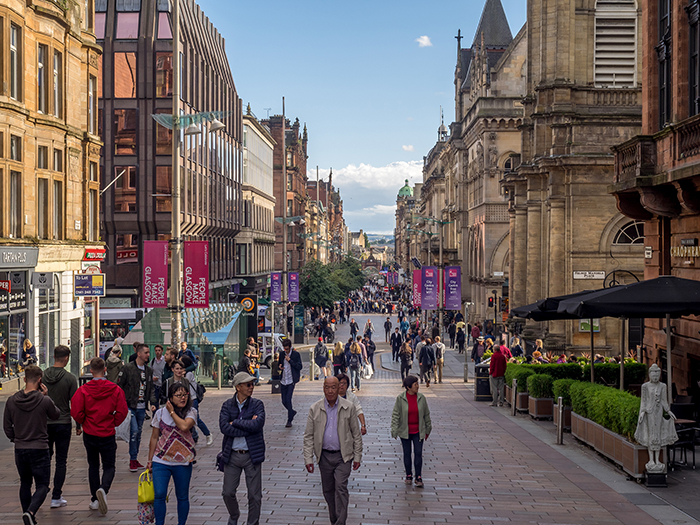
NEW research has revealed that Scotland’s commercial property market continues to see increased interest.
Both investor and occupier demand rose firmly in the first quarter of the year according to the latest RICS Commercial Property Monitor.
Overall occupier demand rose through at the sharpest rate in three years, with a net balance of 21% of respondents in Scotland reporting an increase – up from 10% in the final quarter of 2024.
A net balance of 14% of respondents reported an increase in occupier demand for office space, a net balance of 37% reported an increase regarding industrial space, and a net balance of 12% of respondents reported a rise in occupier demand for retail space.
Surveyors in Scotland now anticipate commercial property rents to rise during the next quarter, as a net balance of 32% expect rents to increase – the highest this has been in over 10 years.
In terms of investor demand, a net balance of 18% of surveyors in Scotland reported a rise in enquiries overall, with net balances of 25% and 29% for office and industrial respectively. Investor demand for retail space was said to have fallen flat.
Capital values are expected to rise over the next three months as a net balance of 11% anticipate an increase at all sector level. On the 12-month outlook for capital values, a net balance of 35% expect an increase overall.
Colette Brough of Whitelaw Baikie Figes in Glasgow said, “There are signs of slight recovery in the market but this may change with current world events.”
Susan Pegg of Drum Property Group Ltd in Edinburgh added, “There is constrained supply of new prime stock. Inflationary pressures on build costs, rent caps and the cost of finance are a barrier to office and build to rent development in Scotland.”
Commenting on the UK picture, RICS chief economist Simon Rubinsohn said, “Despite the turbulence engulfing the geo-political environment following President Trump’s tariff announcement at the start of April, feedback to the latest RICS was steady with the headline investment enquiries metric returning to positive territory, albeit modestly, for the first time since the second quarter of 2022.
“Longer term indicators, while generally constructive, continue to reflect the likely headwinds facing the real estate market over the next twelve months. Aside from the challenges linked to the global economy, concerns around domestic issues including the impact of the uplift in NI contributions are seen as likely weighing on occupier demand.
“Meanwhile the bifurcation in the office sector remains very visible in the latest results with the outlook for prime space seemingly improving as sentiment around secondary offices remains deeply negative.”











